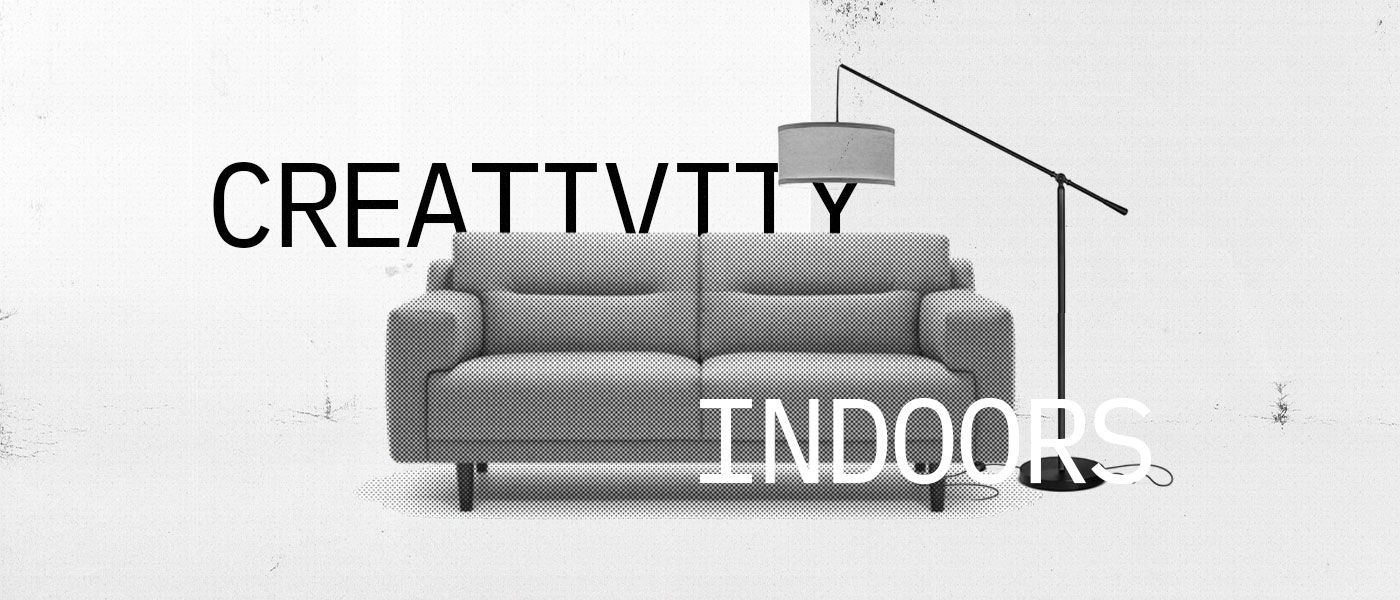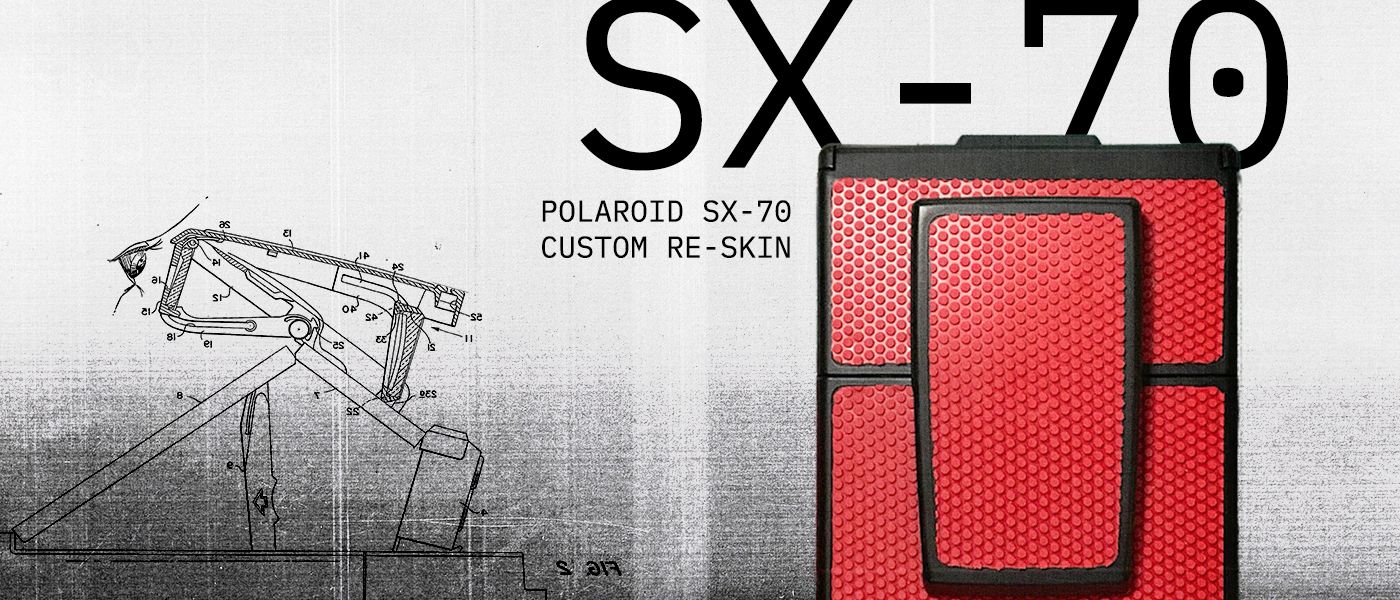
How To
Creative Ways to Stay Inspired Indoors
We’ve heard it for weeks - Stay home, Keep your distance, Wash your hands. We recommend all of these tips, none of them appear particularly challenging. However, for a creative during self-isolation it can be hard to stay creative and inspired within the walls of your home.
It can be even more difficult to find ways to use instant film in your home when it feels like you’ve already photographed it all.
In this article, we want to give you 9 different ways to remain creative and inspired while at home during your coronavirus quarantine.
No. 1 - Photograph everyday items
While it may seem that at one point or another we’ve photographed every possible object in our homes, there’s always a way we can take our everyday objects and capture them in new and interesting ways.
One way we can take ordinary objects and bring new interest to them is to experiment with light that we have available and observe how light can fall onto those objects. While we don’t all have the opportunity to use professional lighting equipment, we do have the ability to play with the light we have available to us. Desk lamps, flashlights, and windows are fantastic sources of light that give us the ability to add interest to otherwise boring objects.
Ted Forbes from the Art of Photography YouTube channel, posted a video at the beginning of quarantine challenging us to do just that. In his first photo assignment, he asked us to take a moment and document how light falls through the windows you may have in your home at various times throughout the day. Take note of when the light is diffused, when it is direct, and the brightness of light you receive throughout the day. This will give you an excellent point of reference for when to photograph particular objects depending on the type of light you’re looking for. Once you have found out the kinds of light you have available to you, use it to create different scenes based on the light.
Bright, direct light can create high contrast images that can be dramatic, serious, and high intensity. Soft, diffuse light can illuminate objects evenly and create pleasing portraits. Lastly low light can be intriguing, moody, or help bring attention to the brighter objects in the scene.
If you’re not sure what type of objects to photograph, great places to start are:
- Plants and flowers
- Glass
- Musical Instruments
- Patterns, Texture, or Colour
- Spaces in your home
While there are infinite amount of objects you can capture in unique ways, these are just a few.
Experiment with different objects, different types of light, and different compositions to create images that you might not have thought of before.
No. 2 - Mix Mediums
As we all know, the beauty of instant photography is that you recieve the physical print of the photo right away. This lends you the opportunity to create and explore using as many techniques as you'd like right away.
If you have an interest in DIY or arts and crafts - by lending materials from other your other hobbies to add to your instant photos, you can transform your instant photos to the next level and create incredible pieces of art.
While this list doesn't cover all of the different materials you can combine with instant photos, these are just a few examples of work from fantastic artists we’ve been following:
Paint
Embroidery
Markers
Metal Staples
No. 3 - Emulsion lifts
Emulsion lifts are a cool technique you can do at home to give your instant photos a new life by removing the emulsion layer from the photo and transferring it to a different surface, like paper.
Note - This does require you to deconstuct the photo and manipulate the fragile emulsion layer in a container of water. This process can't be undone, so it's recommended you start with a photo you're not attached to in case something happens.
Both Matt Day and Analog Things on YouTube have fantastic videos on how to create your own emulsion lifts that we recommend taking a look at before you begin.
It is important to know emulsion lifts are only possible with Polaroid film, as the composition of Instax photos are different and makes it incredibly difficult to separate the photo like you can with Polaroid.
The process does require a few steps and materials, but we recommend either of those videos to walk you though it.
Here are some great examples we’ve found:
No. 4 - Shoot a mosaic
Mosaics are a unique way to create larger pieces of work using instant film, but they can become pricey to make depending on how large of a mosaic you create.
There are multiple ways to create a mosaic using instant film:
- Use an instant film printer (like the Polaroid Lab or the Instax SP-3)
- Creating mosaics in camera
Creating mosaics with instant film printers nowadays are quite simple, as most of them have an app that includes presets for mosaics. However, if you’re looking for a challenge - creating a mosaic in-camera might be for you.
Requiring nothing but your camera, film, and a keen eye for alignment - you can create wonderful pieces that have a lot of character.
Here are some examples from excellent artists:
No. 5 - Deconstruction
Another photo manipulation technique is to deconstruct the instant photo by means of temperature, chemicals, blades or scissors.
The beautiful thing about deconstructing an instant photo, is that the results are often random and you release some of the creative control and let the manipulation technique take over. This creates another level of uniqueness(on top of the already one of a kind photo).
We encourage you to exercise caution when manipulating instant photographs using these techniques, however when done safely - it can produce amazing results.
Adding heat
Microwave
Cutting photos
Chemicals
Removing the frame
No. 6 - Learning new photographic techniques
While learning and experimenting with light like in No. 1 is great, we thought this one deserved its own bullet as there are many other ways to introduce creative constraints when photographing subjects.
We won’t be able to cover all of these means of adding interest to your photographs, consider:
- Shooting with filters
- Adding fog or smoke to create atmosphere
- Shooting in low light
- Removing distractions to create minimal photos
- Using artificial light in creative ways(Lasers, flashlights, TV/Monitor displays, etc)
- Using Flash/Strobes to add light
- Shooting at night
- Using long exposures to capture streaks of light
Here are a few great examples using a few of the above creatively:
No. 7 - Photo Books
While it’s not a technique you can introduce to your photography, photo books are one of the best sources of inspiration for all photographers no matter what skill level.
The best part is that there are photo books for almost everyone depending on what you’re looking for. You could study a particular photographer’s style, you could study the theory of light, composition, and colour, or maybe you just want to enjoy a collection of curated photographs.
Some of our favourite instant photography books are:
1. Polaroid SX-70 by William Eggleston
2. Instant Stories by Wim Wenders
3. The Polaroid Book by Barbara Hitchcock, Steve Crist
These can be found at most book retailers. Photo books can be quite personal as each person has their own style and interest, however these are some of our favourites.
No. 8 - Display your work
It's one thing to take instant photos, but it's another thing to put those on display for others to see. It could be as simple as hanging your photos on your wall, or having a photo professionally framed and mounted. The act of prepping your work for display is a great step to take to give you a new perspective on your work.
Here are just a few different ways you can display your work. While we're all stuck inside so some of these may be out of the question, we can prepare work now so that when the time comes - we're ready.
- Stick your photos to your wall
- Share or sell your prints to others to hang in their spaces
- Scan and share your photos in an online portfolio or personal website
- Apply to different galleries or publications to have your work on display
- Rent out a space to share your work
- Find a unique space and request to have your work shown (ex. coffee shops, libraries, lobbies, etc)
- Use instant photos like personal business cards and share with others
- Hide instant photos in public places with information to online portfolios
No. 9 - Organize your work
While talking about cleaning and organizing isn't always "sexy," it's something that we can all be better at and often put off for other more interesting things - which is exactly why it's our last tip.
Depending on how many photos you take wether digital or film, you need some way to store your photos. The best way to store your photos is with some kind of system to organize them in a way so you can find and reference them later on.
For instant photos, the preferred way to store them is often in shoeboxes or other cardboard photoboxes - but we don't all store them the same.
We can all fall guilty of coming home from taking instant photos and leaving them scattered around on tables, desks, or in a stack somewhere - me included. But depending on your level of "OCD," there's nothing more satisfying than going through your old instant photos and organizing them in a neat and tidy way.
Bonus Round: No. 10 - Look for other Polaroid Photographers to inspire you
One of the fantastic things about the internet and social media, is we now have access to thousands of images from photographers across the globe available to us to appreciate, reference, and inspire us.
A fantastic place to start is on our own curated instagram feed, where you can discover a wide range of instant photographers young and old, that shoot in all different styles.
What may be our favourite instant photographers may not be your favourite instant photographers, so here are a few other places to find inspiration:
- In an Instant on YouTube
- Analog Resurgence on YouTube
- Matt Day on YouTube
- Analog Things on YouTube
- Polaroid Week on Flickr/Instagram
- Polaroid Community on Instagram
- Polazine on Instagram
- Polaroiders on Instagram
- Polaroid Festival
- Analog Forever Magazine
Polagraphic is a community-driven publication with the goal of spreading knowledge and bringing us together around analog photography.
How can you be involved?
You can engage with us and share your work using the hashtag #polagraphic on IG & Twitter, or if you have more to say - you can submit your own articles to be published on our blog.
If you have an idea for an article or topic that you would like to see in our print edition, please Contact Us!
